Leather, a timeless and versatile material, has been used in crafting for centuries. Its applications range from clothing and accessories to furniture and home decor, showcasing its incredible adaptability. However, when working with leather, attention to detail is crucial, especially when it comes to finishing the edges. By following a few simple steps, you can ensure that the leather edges not only look impeccable but also withstand the test of time. Let’s explore the process of finishing leather edges quickly and effortlessly.
Meaning of Leather Edge Finishing
Edge finishing is a meticulous procedure employed to reinforce and enhance the edges of leather products. This meticulous process involves carefully cutting and burnishing the edges, creating a seamless and polished finish. By adding this extra layer of protection, the edges are safeguarded against fraying, ensuring the longevity of the leather item. Not only does edge finishing lend a professional and refined appearance to the piece, but it also provides durability, preventing the leather from tearing easily with frequent use. As such, edge finishing holds immense significance as an integral part of any leatherworking project, guaranteeing both aesthetic appeal and longevity.[1]
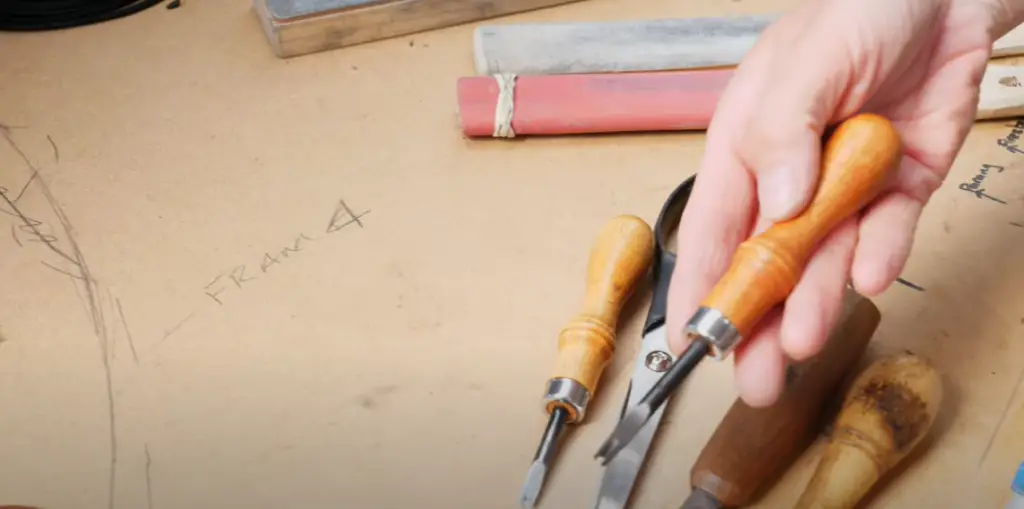
Several Techniques Used in Leather Edge Finishing
Finishing leather edges requires a combination of tools, materials, and techniques to ensure a professional end result. Here are some of the most popular methods used in edge finishing:
- Burnishing: One of the most common methods used in edge finishing is burnishing. This involves polishing the rough edges with a glass rod or wooden tool for a seamless and smooth finish. To do this, apply a thin coat of beeswax or other leather care product onto the edges with an applicator brush, then use a burnishing tool to rub the edges in circular motions until they shine.
- Edge Dyeing: Edge dyeing is also frequently used for edging leather items. This method involves applying a color dye to the edges of the leather, creating a uniform look and preventing fraying. To do this, dip a cotton swab in your desired leather dye color, then apply it along the edges evenly until you achieve your desired hue.
- Edge Beveling: Edge beveling is another popular method employed when finishing leather edges. This technique involves using an edge beveler to round the edges of the leather, creating a sleek and elegant look. This tool is available in different sizes and shapes, making it easy to customize your edges according to individual preference.[1]
Importance of Leather Edge Finishing
Leather edge finishing is an essential step in any leatherworking project. This meticulous procedure reinforces the edges of leather items, creating a professional and polished look that will last for years to come. Not only does it help protect the edges from fraying and tearing, but also adds an extra layer of style and elegance to any piece. Edge finishing can be done in various ways, allowing you to customize the look of your leather item according to individual preference. Thus, it is important to understand and invest in edge finishing techniques for a successful and long-lasting leather project.
These are some of the most popular methods used in edge finishing: waxing, dyeing, burnishing or beveling. While each technique has its own specific benefits, all of them serve the same purpose: to ensure a professional and polished finish with long-lasting durability. With these tools and techniques in hand, you can easily achieve an impressive and well-crafted leather item.[1]
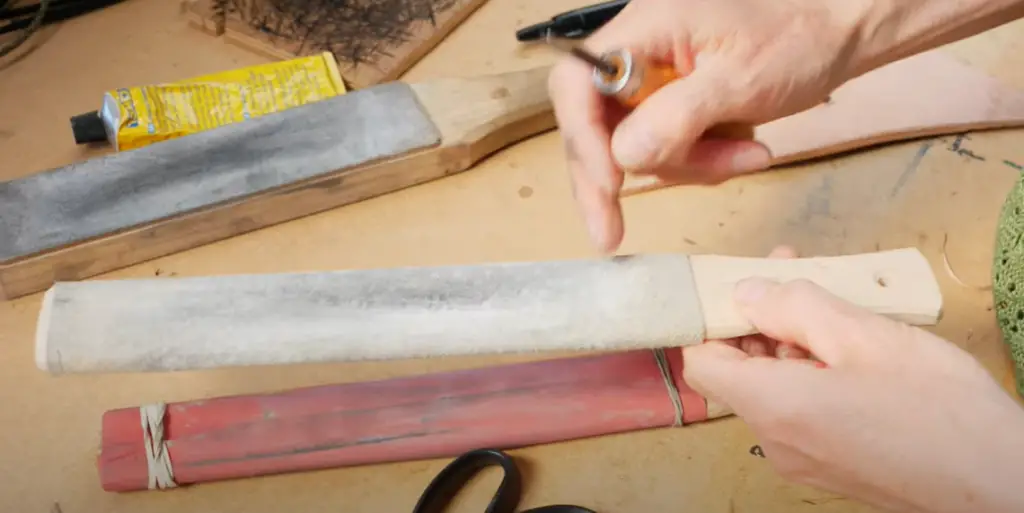
Advanced Leather Edge Finishing Techniques
For those looking for more advanced techniques, there are a few options available. Edge stitching is one such option, which involves sewing a leather cord along the edges of the material to give it extra reinforcement and protection from wear and tear. This technique requires specialized tools and materials, so be sure to research all the necessary steps before attempting it yourself.
Another popular technique is known as skiving, which involves thinning the leather along the edges. This can be done by hand with a special skiver tool or on a machine, depending on the amount of precision and detail you are looking for. Skiving leaves minimal trace behind and delivers an exceptionally refined finish.[3]
Tools and Materials Required for Finishing Leather Edges
Finishing leather edges requires a few specific tools and materials. Here’s a quick overview of what you will need to get started:
- Leather care product such as beeswax or conditioner
- Cotton swab
- Applicator brush
- Burnisher tool
- Edge beveler of desired size and shape
- Edge stitcher (optional)
- Skiver tool (optional, for skiving technique)
- Leather dye or colorant (optional, for edge dyeing technique).
By investing in the necessary tools and materials, you can easily achieve a professional finish to your leather item. Depending on the technique chosen, the results will be uniform, polished and long-lasting.
With the right tools and techniques in hand, you can easily finish leather edges to create a beautiful and professional end product. By following these simple steps, your leather item will look impeccable and stand up to prolonged use with ease.[3]
Step-by-Step Guide to Leather Edge Finishing
Step One: Sand the Edges
Before you start edge finishing, it is important to sand down the edges. This will help smooth out any unevenness and prepare the leather for styling. Use a medium-grit sandpaper to gently remove any excess material from the edges.[5]
Step Two: Bevel the Edges
Once the edges have been sanded, you can use an edge beveler to round out the corners of the leather. This will give it a more refined look and help protect against fraying. Be sure to choose a tool with the size and shape that best suits your needs for maximum precision.[5]
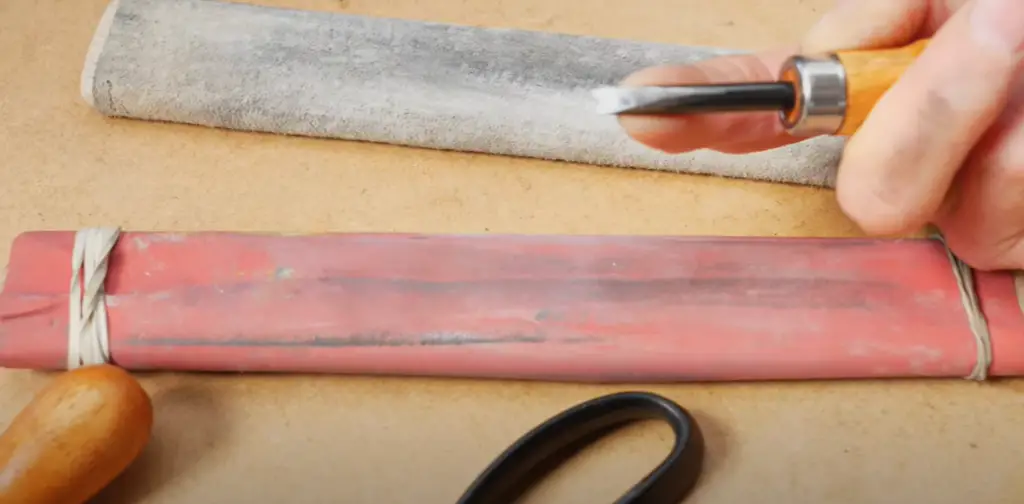
Step Three: Burnish, Paint or Dye?
The next step is to decide which method you want to use for edge finishing: burnishing, painting or dyeing. Each option has its own set of benefits and drawbacks; however, all three will create a uniform and polished finish.
For example, burnishing involves polishing the edges with a leather care product such as beeswax or conditioner. Edge dyeing involves using a cotton swab and leather dye to color the edges of the leather material. Lastly, painting involves applying an acrylic or watercolor paint to the edges for a personalized look.[5]
Why Burnish?
Burnishing is an important step in leather edge finishing. This technique helps seal and protect the edges of the leather from wear and tear, making it more durable and long-lasting. In addition to this, burnishing adds a subtle shine to the leather that enhances its overall look and feel.[5]
Why Paint?
Painting the edges of leather can be a great way to add a unique and personalized touch. Choose from acrylic or watercolor paints to create colorful accents or patterns that make your item stand out.[5]
Why Dye?
Edge dyeing is an effective way to give the edges of the leather a uniform look. This eliminates any fraying or unevenness, creating a polished and refined finish.[5]
Waterproof with wax
The final step in leather edge finishing is to use a wax-based sealant for waterproofing. Simply apply the sealant with an applicator brush and let it dry. This will ensure that your leather item is protected from water damage and everyday wear and tear.
Leather edge finishing can be a great way to add elegance and style to any leather project. With the right tools and techniques, you can easily achieve a professional finish that will stand up to prolonged use with ease. So don’t hesitate to invest in edge finishing for long-lasting results![2]
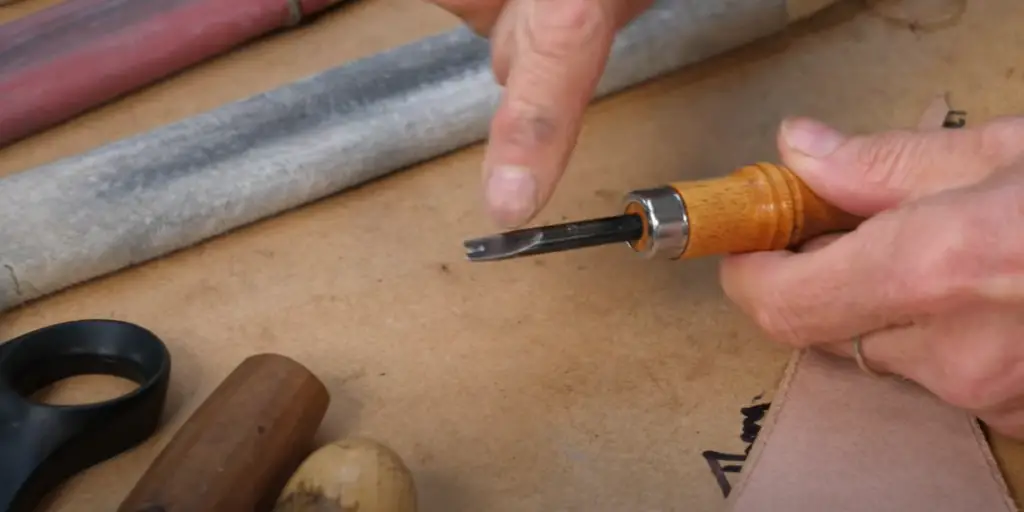
Edge dressing using Edge Colorant
For those seeking a more vibrant and eye-catching finish, edge dressing with colorants is an excellent choice. To achieve this, take a cotton swab and carefully apply the edge colorant to the edges of your leather item. Gently rub it in, ensuring that you evenly distribute the colorant to create a smooth and polished appearance. This meticulous process will result in beautifully finished edges that will truly make your leather item stand out from the crowd, adding a touch of elegance and sophistication to your style.[2]
Folding and Stitching
Folding and stitching is another popular technique used for finishing leather edges. This involves folding the edge of the leather material over itself and sewing a stitch along it to form a neat seam. This creates a strong and durable finish that will stand up to wear and tear with ease.
So, whether you are looking for a waxed, beveled, dyed, painted or stitched finish – there are plenty of options available to you when it comes to leather edge finishing. With the right tools and techniques at your disposal, you can easily achieve a professional-looking finished piece that will last for years to come.[2]
Tips for Successful Leather Edge Finishing
Here are some expert tips to help you achieve the perfect finish when it comes to leather edge finishing:
- Start by sanding and beveling the edges of the leather. This crucial step ensures that the material is even and ready for styling. Use sandpaper to smooth any rough edges and create a neat, professional look.
- When choosing an edge finish, consider the specific requirements of your project. Burnishing, for example, involves applying friction to the leather edge using a burnishing tool or bone folder to create a polished appearance. Alternatively, you can paint or dye the edges to match the color scheme or design of your item.
- To enhance the durability and longevity of your leather item, invest in a high-quality wax sealant. This protective layer will not only make your leather waterproof but also guard it against everyday wear and tear.
- If you plan on folding or stitching the leather, it’s crucial to select a strong thread that won’t easily snap or fray. Consider using nylon or polyester thread, which are known for their strength and resilience. Additionally, adding extra stitches along the edges will provide added durability and reinforce the structural integrity of your leather item.[2]
By following these detailed tips, you’ll be able to achieve a flawless and professional finish on your leather projects.
Maintaining Finished Edges
Leather requires regular maintenance to ensure its longevity and pristine appearance. Here are some detailed tips on how to effectively maintain the finished edges of your leather items:
- Cleaning: It is important to clean your leather regularly using a damp cloth. However, exercise caution and avoid using any soaps or detergents that may harm the finish or texture of the leather.
- Conditioning: To prevent drying and cracking, it is recommended to apply a high-quality leather conditioner at least once every six months. This will help to keep the leather supple and nourished, enhancing its durability.
- Polishing: To keep the edges of your leather items looking shiny and new, consider using a specialized leather care product. Gently polish the edges, paying attention to every detail, to maintain their lustrous appearance.
- Proper Storage: To prevent potential damage over time, store your leather items away from excessive heat and humidity. Exposure to these elements can cause the leather to warp, fade, or deteriorate. Opt for a cool and dry storage space to preserve the quality of your leather belongings.[4]
By following these detailed maintenance tips, you can ensure that your leather retains its beauty and remains in excellent condition for years to come.
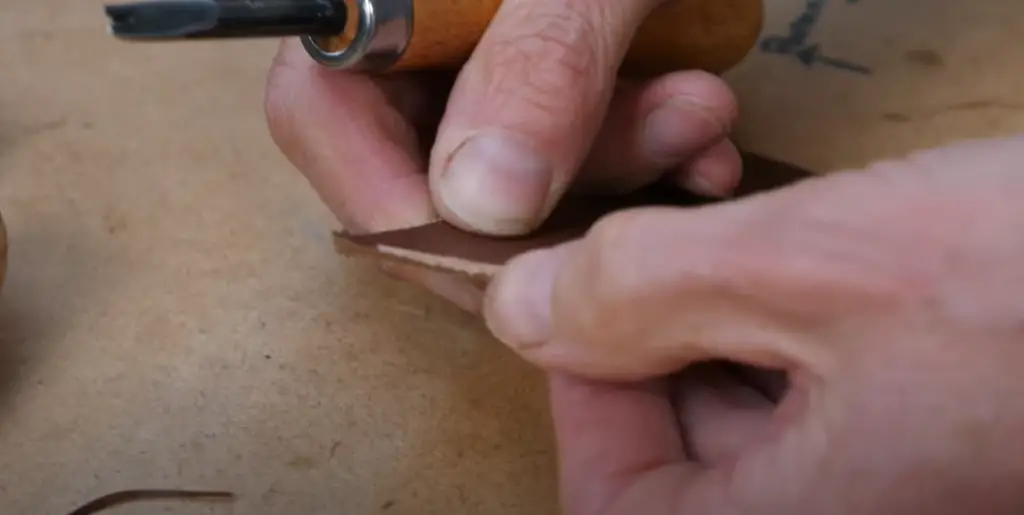
Protecting from Wear and Tear
Proper leather edge finishing is crucial for protecting your valuable items from the inevitable wear and tear they will encounter. However, it is equally important to take proactive measures to minimize the chances of damage. Here are some highly practical and effective tips to safeguard your leather possessions against everyday use:
- Shield your leather items from direct sunlight exposure, as prolonged exposure can cause the leather to fade and crack over time. Consider storing them in a shaded area or using protective covers when not in use.
- Regularly condition and polish your beloved leather items using high-quality leather care products. This will not only restore and maintain the natural luster and suppleness of the leather but also provide an added layer of protection against moisture and environmental factors.
- Accidental spills happen, but it’s crucial to clean them as soon as possible. Use a damp cloth to gently blot the spill and avoid rubbing vigorously, which can push the liquid deeper into the leather. For dirt or debris, gently rub the affected area with a soft cloth or brush to remove it without causing any damage.
- While leather is durable, overloading your bag or any leather item can strain its construction and compromise its longevity. Use your leather goods for their intended purpose and carry only the essentials, alleviating unnecessary stress on the material and maintaining its pristine condition for years to come.[4]
By following these detailed tips, you can enjoy the timeless beauty and longevity of your leather items, ensuring they remain in impeccable condition throughout their lifespan.
Troubleshooting Common Issues
Achieving a flawless leather edge finishing can sometimes be a challenging process that requires attention to detail. Here are some valuable tips to troubleshoot common issues and ensure a perfect outcome:
Firstly, before applying any finish, it is crucial to sand the leather edges evenly. This step ensures that there are no uneven edges that could potentially affect the final result. By taking the time to sand them properly, you lay the foundation for a smooth and polished finish.
When dyeing the leather, it’s essential to use gentle, circular motions and apply light pressure. This technique ensures even coverage and prevents any potential damage to the leather. Avoid rubbing too hard, as this could lead to undesirable consequences.
Lastly, when it comes to folding and stitching, paying attention to detail is crucial. Make sure to pull the thread tight while sewing, ensuring a neat and professional finish. This step adds a touch of craftsmanship to your work, elevating the overall quality of the final product.
By following these detailed tips, you can overcome any challenges that may arise during the leather edge finishing process. With patience and precision, you will achieve outstanding results that showcase your skill and dedication to your craft.[4]
Identifying Causes of Damage
It is crucial to identify the specific factors that contribute to damage on your leather item and proactively take measures to prevent them in the future. Here are some common causes of damage that you should be aware of:
- Excessive exposure to sunlight and UV rays can gradually fade the color, cause cracking, and lead to undesirable discoloration, compromising the overall appearance and quality of the leather.
- Overloading a bag or applying excessive weight can exert unnecessary strain on the leather, potentially resulting in tears or rips. It is advisable to distribute the weight evenly and avoid exceeding the recommended capacity to maintain the structural integrity of the item.
- Neglecting regular cleaning and conditioning can cause the leather to dry out over time, leaving it vulnerable to cracks and damage. By implementing a proper cleaning and conditioning routine, you can effectively extend the lifespan of your leather item and keep it looking pristine.
- Abrasion from sharp objects like keys or jewelry can leave unsightly scuff marks and scratches on the leather surface. It is important to handle such objects with care and avoid direct contact with the leather to prevent unnecessary damage.[4]
By being mindful of these potential causes of damage and taking appropriate preventive measures, you can ensure the longevity and durability of your cherished leather possessions.
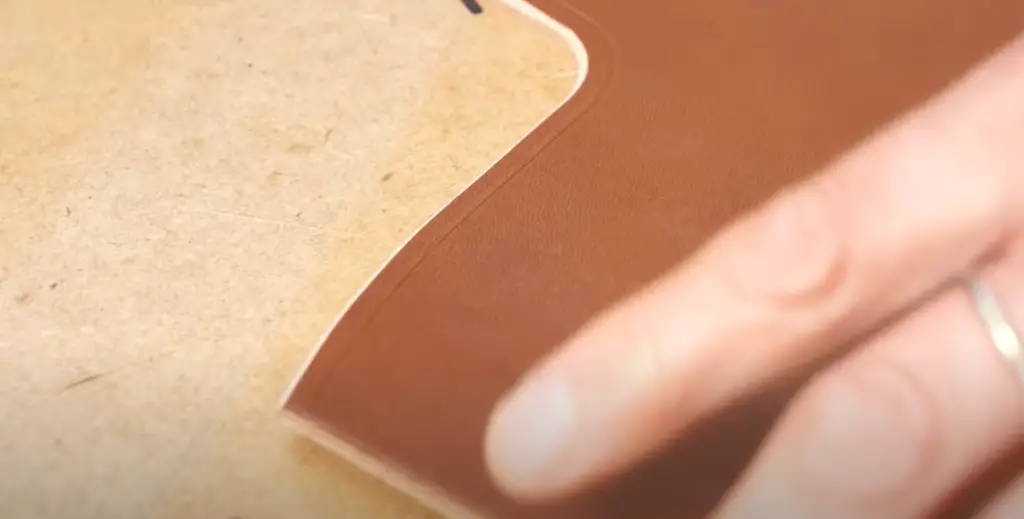
Solutions for Edge Problems
If your leather item has sustained damage, here are some tips for repairing the edges:
- For cracks or scuffs, use a leather repair kit to fill in any gaps and blend away blemishes.
- If the edge is fraying, use an adhesive to seal it up and keep it from further unraveling.
- To buff away scratches or scuff marks, use a wax-based leather care product.
Leather edge finishing can add the perfect touch to your project, but it’s important to remember that regular maintenance is key to keeping leather looking its best. With proper care and attention, you can have beautiful and long-lasting finished edges for years to come![4]
FAQ
What can I use for leather edges?
For leather edges, you can use various types of adhesives, waxes, dyes, paints, and finishes for a professional-looking finish. However, it is important to use the right product for your particular project.
How to finish a leather edge wallet?
To finish a leather edge wallet, start by using an edge dressing to create a beveled or curved edge. Once the desired shape is achieved, use a burnishing tool and wax-based leather care product to buff and shine the edges. Finally, seal it off with a waterproofing agent. It’s also important to remember that regular cleaning and conditioning.
How do you finish raw faux leather edges?
To finish raw faux leather edges, start by trimming away any excess material. Next, use an adhesive to seal the edges and protect them from fraying. Finally, use a pair of scissors or tweezers to add texture to the edges for a finished look. Be sure to test your product on a small scrap piece before using it on your project.
What are the finishing techniques in leather?
Finishing techniques in leather can include dyeing, painting, folding and stitching, burnishing, waterproofing, and conditioning. Depending on your project needs, you can choose the technique that will provide the best protection for your item while achieving the desired look.
What is the best finish for leather?
The best finish for leather depends on the item you are working with and its intended purpose. Generally, wax-based leather care products provide the best protection against wear and tear while maintaining a natural luster. For waterproofing items such as wallets or shoes, a wax-based sealant can be used to protect them from moisture damage.
What are 3 finishing techniques?
Three common finishing techniques for leather are dyeing, painting, and burnishing. Dyeing is a great way to add color to your item without compromising its natural texture. Painting can be used to create intricate designs and patterns on leather items. Lastly, burnishing is the process of buffing and polishing the edges of leather goods for a professional-looking finish.
What is leather edging?
Leather edging is the process of finishing and smoothing out the edges of a leather item before use. It can include folding, dyeing, painting, burnishing, or stitching techniques to achieve a polished look. Edging also helps protect your item from wear and tear by creating an extra layer between the material and potential abrasive surfaces.
The finished result should be a beautiful and professional-looking edge that stands the test of time. With the right finishing techniques and regular maintenance, your leather goods can last for years to come!
Useful Video: Sharpening Leatherwork Tools – The Edge Beveler
Conclusion
Leather edge finishing can add the perfect touch to your project, but it’s important to remember that regular maintenance is key to keeping leather looking its best. With proper care and attention, you can have beautiful and long-lasting finished edges for years to come!
Whether you’re dyeing, painting, folding or stitching, make sure to use the right techniques and products to get the best results. And if your item has sustained any damage, don’t forget to use a leather repair kit to fill in any gaps or blend away blemishes.
Taking care of your leather goods can be a rewarding experience that yields satisfying results. So why not give it a try and see what you can create?
References:
- https://www.sailrite.com/how-to-finish-leather-edges
- https://www.deskera.com/blog/leather-edge-finishing-techniques/
- https://www.leatherbeast.com/blogpage/leather-edge-finishing
- https://www.ivan.tw/blogs/how-to/tech-tip-4-ways-to-edge-finishing
- https://leatherninja.com/how-to-finish-leather-edges/

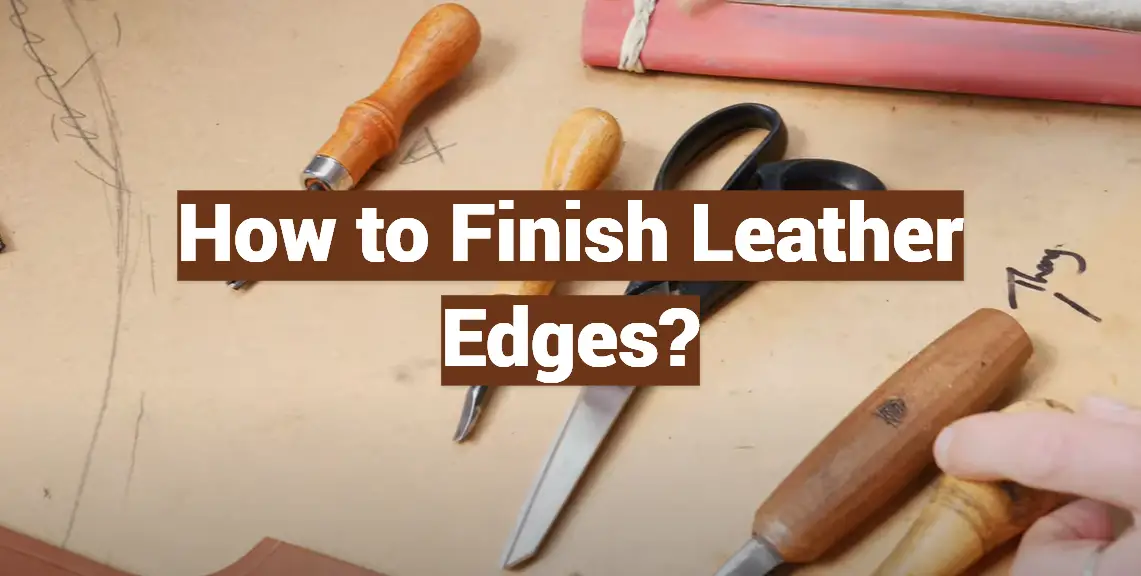

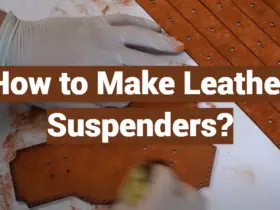

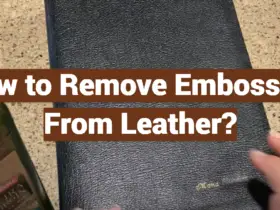

Leave a Reply